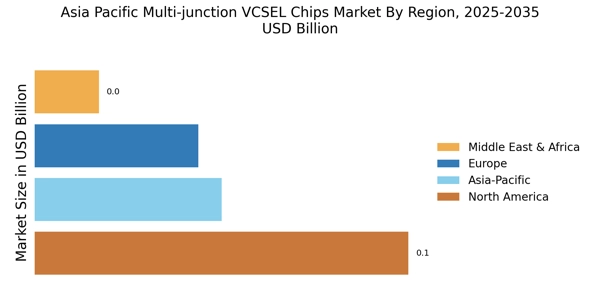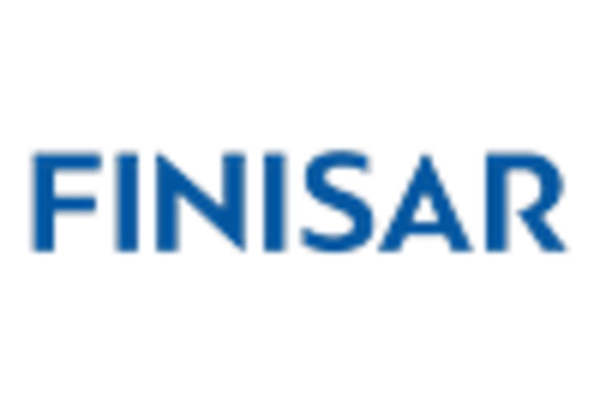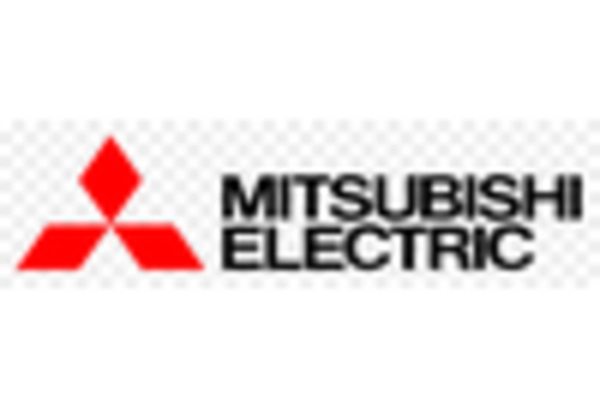Rising Focus on Data Security
As cyber threats become more sophisticated, the emphasis on data security is intensifying across various sectors in Asia Pacific. This focus is likely to impact the Asia Pacific Multi-junction VCSEL Chips Market, as secure data transmission becomes paramount. Multi-junction VCSEL chips are essential for enabling secure optical communication, which is critical for protecting sensitive information. The market for optical communication components is projected to grow significantly, with estimates suggesting a CAGR of around 15% in the next few years. This trend indicates that companies investing in secure communication technologies will likely drive demand for multi-junction VCSEL chips, thereby shaping the market landscape.
Expansion of Consumer Electronics
The ongoing expansion of the consumer electronics sector in Asia Pacific is likely to bolster the Asia Pacific Multi-junction VCSEL Chips Market. With the increasing integration of advanced technologies in smartphones, tablets, and wearables, the demand for high-performance optical components is expected to rise. Multi-junction VCSEL chips are particularly suited for applications such as facial recognition and augmented reality, which are becoming standard features in modern devices. Market analysis indicates that the consumer electronics segment could account for a substantial share of the overall demand for VCSEL chips, potentially exceeding 40% by 2026. This growth is indicative of the broader trend towards enhanced user experiences and innovative functionalities in consumer products.
Growth in Automotive Applications
The automotive industry in Asia Pacific is undergoing a transformation, with a marked shift towards electric and autonomous vehicles. This evolution is likely to drive the Asia Pacific Multi-junction VCSEL Chips Market as these vehicles increasingly rely on advanced sensor technologies for navigation and safety. Multi-junction VCSEL chips are integral to LiDAR systems, which are essential for autonomous driving capabilities. Market projections suggest that the automotive sector could represent a significant portion of the VCSEL chip market, with an anticipated growth rate of around 25% over the next few years. This trend underscores the potential for multi-junction VCSEL chips to play a critical role in the future of transportation.
Advancements in Medical Technology
The medical technology sector in Asia Pacific is experiencing rapid advancements, particularly in diagnostic and therapeutic applications. This trend is likely to enhance the Asia Pacific Multi-junction VCSEL Chips Market, as these chips are increasingly utilized in medical devices for applications such as optical coherence tomography and laser-based therapies. The demand for precision and efficiency in medical diagnostics is driving the need for high-quality optical components. Market data indicates that the medical technology segment could contribute significantly to the overall growth of the VCSEL chips market, with expectations of a CAGR of approximately 20% in the coming years. This growth reflects the increasing reliance on innovative technologies in healthcare.
Increasing Adoption of 5G Technology
The proliferation of 5G technology across the Asia Pacific region appears to be a pivotal driver for the Asia Pacific Multi-junction VCSEL Chips Market. As telecommunications companies invest heavily in infrastructure to support faster data transmission and lower latency, the demand for advanced optical components, including multi-junction VCSEL chips, is likely to surge. These chips are essential for high-speed data communication, which is a cornerstone of 5G networks. Market data suggests that the 5G rollout could lead to a compound annual growth rate (CAGR) of over 30% in the demand for optical components, thereby significantly impacting the multi-junction VCSEL chips market. This trend indicates a robust growth trajectory for manufacturers and suppliers in the region.
















Leave a Comment